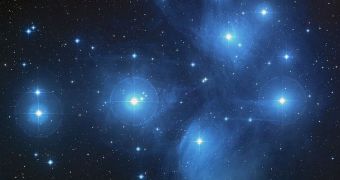According to the conclusions of a new scientific study conducted in Denmark, it would appear that the development of life here on Earth got a boon from supernova explosions that occurred in the vicinity of the solar system.
Without these events, it is possible that life wouldn't have developed here, or that it would have taken a lot longer to reach the current level of diversity and complexity. The research team behind the study was led by Technical University of Denmark (DTU) professor Henrik Svensmark.
He believes that supernovae had a very strong and discernible influence on the development of life here. Details of his theory were published in a recent issue of the esteemed scientific journal Monthly Notices of the Royal Astronomical Society.
Supernova blasts occur when massive stars reach the end of their burning cycle (the main sequence), and exhaust their hydrogen fuel. Nuclear fusion can no longer be sustained, so the ensuing instabilities catapult the outer layers of the stars' atmosphere out into space in an extremely violent explosion.
These blasts are so intense that the stars' brightnesses temporarily become greater than those of their respective host galaxies, as viewed from Earth. These events also produce intense radiations called galactic cosmic rays (GCR).
According to Svensmark, a supernova occurring close to Earth would have drenched our planet's atmosphere in vast amounts of GCR, influencing it directly. His research analyzed potential signs of this happening over the last 500 million years.
The team also created a dataset that reveals supernova explosion rates in the vicinity of the solar system, over this time frame. This was done by analyzing large volumes of data on open star clusters, structures that contain new stellar objects of various ages, and spread throughout the Milky Way.
“When this inquiry into the effects of cosmic rays from supernova remnants began 16 years ago, we never imagined that it would lead us so deep into time, or into so many aspects of the Earth's history,” says professor Eigil Friis-Christensen.
“The connection to evolution is a culmination of this work,” adds the expert, who is the director of DTU Space, as quoted by Astrobiology Magazine. He says that GCR would have had a massive influence on Earth's climate, making it so that species could evolve faster.

 14 DAY TRIAL //
14 DAY TRIAL //